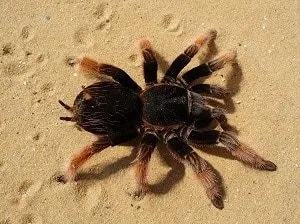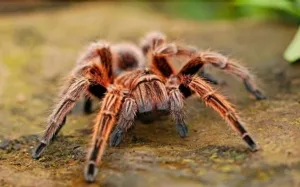What Factors Influence Tarantula Cost?
The cost of a tarantula can vary widely, influenced by several key factors. Understanding these elements is crucial for potential owners to budget effectively and make informed decisions. Species, age, size, and origin all play significant roles in determining the final price. Furthermore, the tarantula’s health, coloration, and temperament can influence its market value. Rare or highly sought-after species typically command higher prices due to their limited availability and unique characteristics. The demand within the pet trade market also affects the cost. This guide aims to break down these factors and provide a comprehensive understanding of tarantula pricing.
Species of Tarantula and Their Price Ranges
Different tarantula species exhibit significant price variations. Common and readily available species, such as the Chilean Rose Hair Tarantula (Grammostola rosea), are generally more affordable, often costing between $20 to $50. These species are popular among beginners due to their docile nature and relatively low maintenance requirements. On the other hand, more exotic or rare species, like the Cobalt Blue Tarantula (Cyaneopubescens), can range from $75 to $200 or more. The price of a tarantula also depends on the rarity of the spider, and any spider with uncommon coloration patterns can boost the price. Therefore, prospective owners should research different species and their typical price ranges to ensure they find a tarantula that fits their budget and experience level.
Beginner-Friendly Tarantulas and Their Costs

For those new to tarantula ownership, certain species are highly recommended due to their gentle temperament and manageable care requirements. These beginner-friendly tarantulas typically come at a lower cost, making them an excellent starting point. The Chilean Rose Hair Tarantula and the Mexican Red Knee Tarantula (Brachypelma hamorii) are two popular choices, often priced between $20 and $60. Their relatively slow growth rate and tolerance for occasional handling make them ideal for beginners. These tarantulas are generally less demanding in terms of habitat and diet. Purchasing a beginner-friendly species allows new owners to learn about tarantula care without the added pressure of managing a more complex or expensive species.
Intermediate Tarantulas and Their Price Points
As experience grows, tarantula enthusiasts may explore intermediate species, which often present a step up in terms of care needs and cost. These tarantulas can range from $50 to $150, depending on the species and availability. These spiders may have unique needs or be slightly more defensive. The price can vary widely depending on factors like coloration, origin, and rarity. Owning an intermediate tarantula offers the opportunity to expand one’s knowledge and experience while still remaining within a reasonable budget. Researching the specific needs of each species is crucial to ensure proper care and a successful experience.
Rare and Exotic Tarantulas The High-End Costs
For seasoned collectors and enthusiasts, rare and exotic tarantulas represent the pinnacle of the hobby. These species often come with a higher price tag due to their scarcity, unique characteristics, and sometimes, higher care requirements. The cost of these tarantulas can range from $150 to several hundred dollars, and in some cases, even thousands, depending on the species, lineage, and any special traits. Owning these species requires a deep understanding of tarantula care, as well as a commitment to providing an optimal environment. The higher cost reflects the rarity and the specialized care required to ensure their health and well-being.
Where to Buy a Tarantula and Price Variations

The place of purchase can significantly affect the cost of a tarantula. Different sources offer varying prices, levels of quality, and guarantees. Understanding where to buy a tarantula is crucial for finding the best value and ensuring the health of your new pet. Researching different sellers and comparing their pricing and reputations can help buyers make informed decisions. Potential owners should also consider factors like the seller’s experience, the health of their tarantulas, and the availability of support and advice post-purchase. Comparing options can help ensure a satisfactory purchase experience.
Online Retailers and Their Pricing
Online retailers have become a popular source for purchasing tarantulas, offering a wide selection and convenience. Prices can vary significantly among online vendors, so it’s important to compare options. Online retailers may offer lower prices due to lower overhead costs, but buyers should factor in shipping fees, which can add to the overall cost. Reputable online retailers provide detailed information about their tarantulas, including species, size, and origin. Customers should always check for reviews and ratings to gauge the seller’s reliability. Before making a purchase, be sure to check the retailer’s return policies and any guarantees offered.
Local Pet Stores and Breeders
Local pet stores and breeders can provide a more personalized experience, allowing potential owners to see the tarantula in person. Pricing at local pet stores may be slightly higher than online retailers, but you can often get immediate access to the tarantula, as well as the ability to assess its health and temperament directly. Breeders often specialize in specific species and offer expert advice. Buying from a breeder can sometimes ensure the tarantula is raised with a lot of care, as well as the ability to ask questions. Always check the store’s reputation and any guarantees they offer before making a purchase.
Additional Costs of Tarantula Ownership

Beyond the initial purchase price, owning a tarantula involves ongoing costs that prospective owners must consider. These expenses include the cost of housing, feeding, and providing healthcare. Planning for these additional costs will help ensure that the tarantula remains healthy. Consider budgeting for recurring expenses like food and substrate. This part will cover the main aspects of costs beyond the initial purchase, so that tarantula owners can plan for the future.
Enclosure and Habitat Costs
Setting up a proper enclosure is essential for a tarantula’s well-being, but these costs can add up quickly. The cost of an enclosure depends on the size and type of tarantula, as well as the materials used. A basic enclosure can cost between $20 and $100. The substrate, which provides bedding and humidity control, can range from $10 to $30 per bag, depending on the type. Additional costs may include decorations such as hides, water dishes, and artificial plants, which can total from $15 to $50. Ensure the enclosure is secure and appropriate for your species of tarantula.
Food and Supplies Expenses
Feeding a tarantula is another recurring expense. The cost of food depends on the tarantula’s size and the type of food it eats, which is mainly insects. Crickets and mealworms are popular choices. A regular supply of crickets or mealworms can cost anywhere from $10 to $30 or more per month, depending on your tarantula’s appetite. Supplementing with vitamins and minerals can add to the cost. Setting up a feeding schedule and monitoring your tarantula’s eating habits will help you manage these costs effectively. Providing fresh water is also necessary, so it is important to budget the proper care.
Healthcare and Veterinary Costs

Although tarantulas are generally low-maintenance pets, healthcare expenses can arise. While tarantulas are generally hardy, they can still experience health issues. Veterinary care for tarantulas is typically more expensive than that for common pets. Consulting an exotic animal veterinarian is crucial, especially if your tarantula shows signs of illness. Healthcare costs can include regular check-ups, medications, and treatments. Setting aside a budget for potential healthcare needs is a smart strategy for any tarantula owner. These preventative costs can help ensure your tarantula enjoys a long, healthy life.
Tips for Saving Money on Tarantula Costs
While owning a tarantula can be a rewarding experience, there are ways to minimize costs without compromising your pet’s well-being. Researching different species and choosing a more affordable, beginner-friendly option is a good starting point. Buying supplies in bulk, when possible, can also lead to savings. Sourcing food from local breeders or pet stores can sometimes provide better prices than online retailers. Proper research and thoughtful planning will help keep the costs manageable. Always prioritize the well-being of your tarantula. Choosing the right species and being mindful of ongoing expenses can help make tarantula ownership an enjoyable and sustainable hobby.
